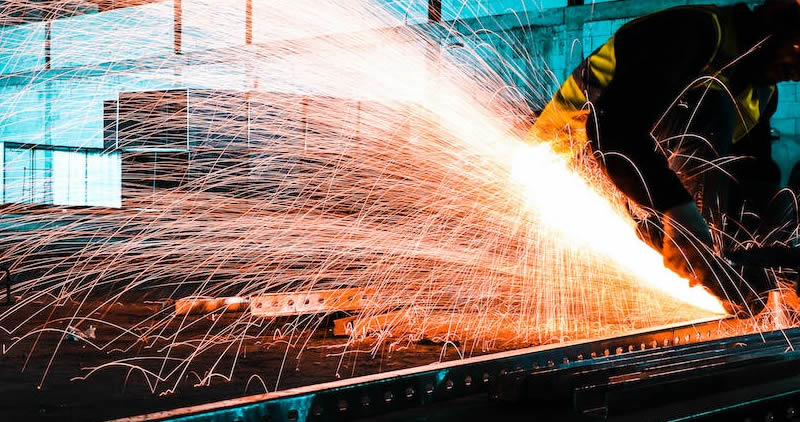In the world of **industrial manufacturing**, there’s an ongoing conversation about CNC vs. manual metal cutting, examining the merits and drawbacks of each method in achieving efficient and precise results. As technology continues to evolve, manufacturers are always on the lookout for ways to improve their processes, reduce wastage, and enhance productivity. Understanding the distinctions and ideal applications of Computer Numerical Control (CNC) machines and manual techniques is vital, especially in industries where precision is non-negotiable.

The Rise of CNC Machines
The advent of **CNC machines** changed the landscape of metal cutting dramatically. With their ability to execute precise cuts through automated processes, these machines have transformed manufacturing floors, introducing a new level of precision and efficiency. CNC machines operate through pre-programmed sequences of commands, allowing for intricate designs to be replicated consistently and at scale. The use of advanced techniques such as laser cutting, plasma cutting, and EDM (Electronic Discharge Machining) has set a new benchmark for the industry.
Benefits of CNC Metal Cutting
One of the primary advantages of CNC machines is their efficiency. Once programmed, they can run continuously with minimal supervision, which significantly reduces labor costs and boosts productivity. They also minimize human error, ensuring that each cut is virtually identical to the last, which is crucial for maintaining quality across mass-produced items. Furthermore, CNC machines can handle complex geometries and hard materials that might pose challenges in manual cutting scenarios.
Challenges of CNC Metal Cutting
Despite its numerous advantages, CNC metal cutting comes with challenges. The initial investment for these machines can be substantial, requiring not only the machines themselves but also skilled operators and programmers. Additionally, maintenance costs can add up over time, especially as machines age. There is also the consideration of set-up times and programming, which can be complex and time-consuming, though it’s offset by the efficiency during production runs.
The Enduring Relevance of Manual Metal Cutting
While modern technologies have made significant strides, manual metal cutting techniques remain indispensably relevant. These traditional methods involve tools like hacksaws, shears, and traditional drill presses, which, despite their simplicity, offer a level of control and adaptability that is invaluable, particularly for custom or low-volume projects. Many artisans and small manufacturers prefer manual methods for their tactile feedback and hands-on craftsmanship.
Advantages of Manual Cutting
Manual cutting tools are generally less expensive than their CNC counterparts, making them accessible to a broader range of professionals and hobbyists. They offer a tangible sense of craftsmanship, where the skill of the operator is paramount. Additionally, for small-scale or custom operations, manual metal cutting provides flexibility that allows operators to make on-the-fly adjustments without the need for elaborate programming.
Limitations of Manual Metal Cutting
Despite their many uses, manual metal cutting methods are not without limitations. They are more labor-intensive and time-consuming, thus increasing the cost and lowering the feasibility for mass production. The precision achievable manually cannot rival that of CNC technology, and there’s a greater risk of variability in the final product due to human error. Additionally, manual methods may struggle with harder materials or intricate designs, where CNC machines would excel.
Choosing Between CNC and Manual Cutting
When selecting between CNC vs. manual metal cutting, the decision often boils down to the specific requirements of the project, budget constraints, and desired outcome. For high-volume production with complex specifications, CNC machines are usually preferred due to their precision and repeatability. Conversely, for bespoke or low-volume projects, manual cutting may be more practical and cost-effective.
For a deeper understanding of these techniques, you can explore additional information on manual metal tools or refine your insights on reducing burrs in CNC processes, both crucial to enhancing the overall effectiveness of metal cutting practices.

Future of Metal Cutting: Automation and Beyond
The future of metal cutting will likely see a further shift towards automation and integration of advanced technologies. Innovations in artificial intelligence and machine learning can potentially streamline the programming of CNC machines, enhance their self-correction capabilities, and introduce predictive maintenance features. There is also growing potential for hybrid solutions that combine the best aspects of both CNC and manual methods to offer unmatched flexibility and efficiency.
Ultimately, whether through advanced machinery or skilled artisanship, the focus of metal cutting will always aim to push boundaries, reduce waste, and perfect manufacturing processes. As the industry evolves, the conversation around **CNC vs. manual metal cutting** will remain relevant, underscoring the enduring quest for precision and excellence in metal fabrication.
For more insights on maintaining precision in manufacturing, consider visiting carbon steel cutting articles that delve deeper into specific methodology.
This article contains affiliate links. We may earn a commission at no extra cost to you.

